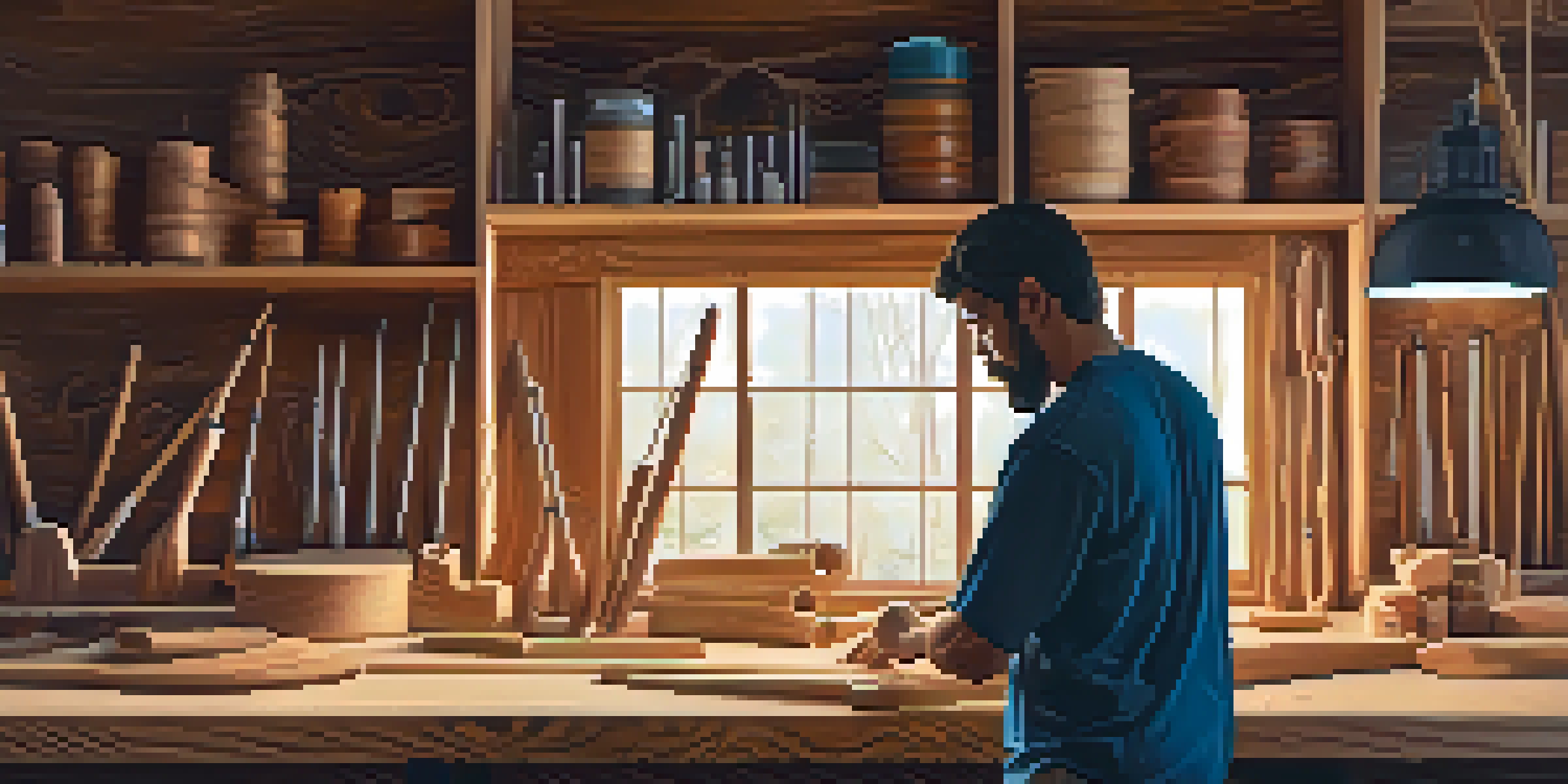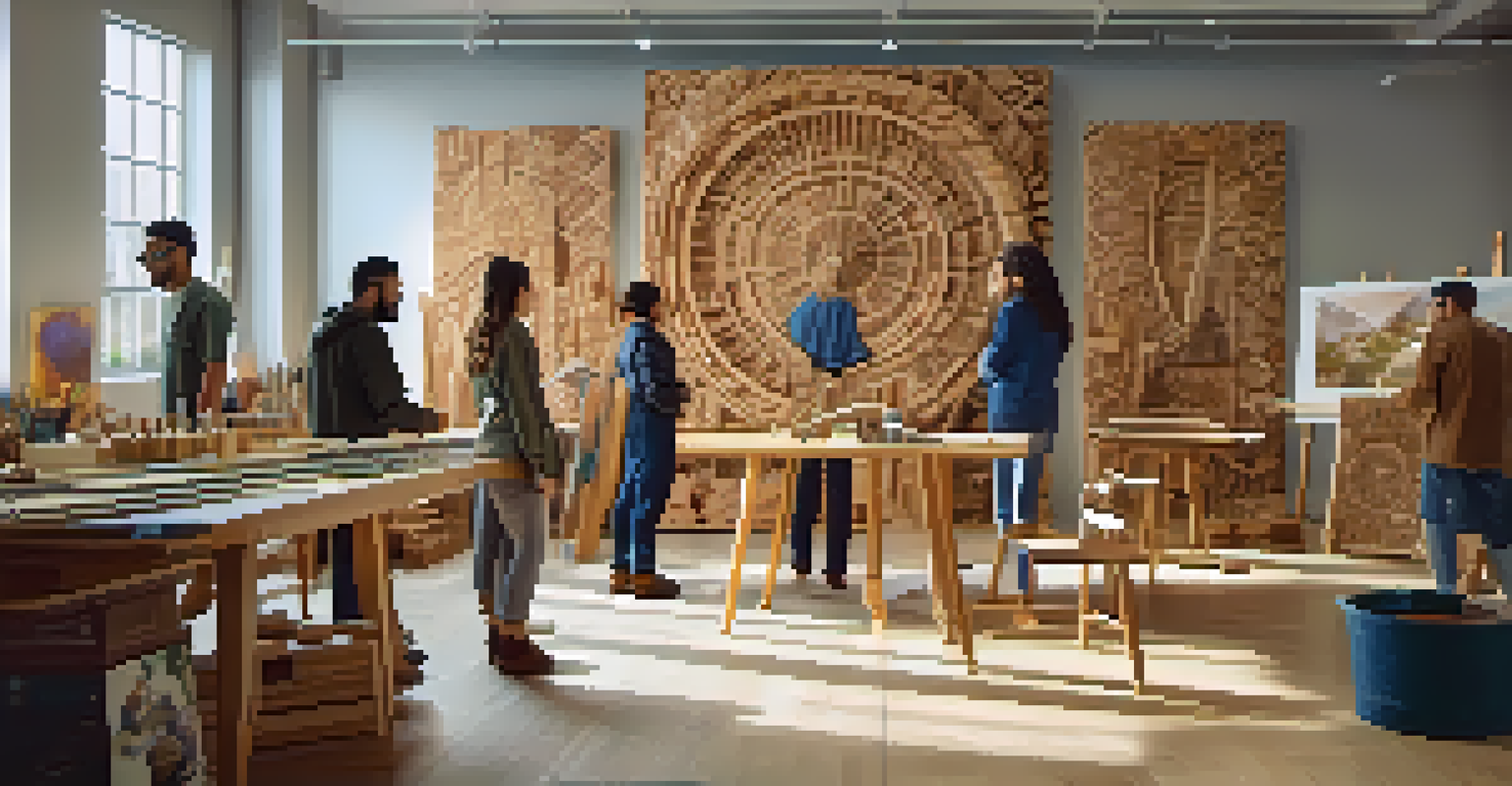The Future of Carving: Integrating Augmented Reality into Design

Understanding Augmented Reality in Design
Augmented reality (AR) is changing how we visualize and create designs. By overlaying digital information onto the real world, AR allows designers to see their concepts in a more interactive way. For instance, imagine a woodworker being able to project a digital model onto a piece of wood before making the first cut.
Augmented reality is the next step in the evolution of design, allowing for a seamless blend of imagination and reality.
This technology bridges the gap between imagination and reality, making it easier for designers to experiment without the fear of making irreversible mistakes. Designers can play with scale, colors, and textures in real-time, which opens up a world of creative possibilities.
As AR continues to evolve, its integration into the carving process promises to enhance both creativity and precision, making it an invaluable tool for artists and craftsmen alike.
The Benefits of Using AR in Carving Design
One of the most significant advantages of AR in carving design is the enhanced visualization it offers. Designers can see how their carvings will look before they even pick up a tool, allowing for more informed decisions. This not only saves time but also reduces waste, as designers can perfect their ideas digitally first.

Additionally, AR can help in the design validation process. By using AR, artists can receive immediate feedback about their designs from clients or peers, facilitating collaboration and making adjustments easier. This immediacy helps ensure that the final product aligns closely with the initial vision.
AR Enhances Design Visualization
Augmented reality allows designers to visualize their carvings before beginning, leading to more informed decisions and reduced waste.
Moreover, this technology promotes accessibility. Newcomers to carving can use AR as a learning tool, guiding them through complex designs with step-by-step overlays, making the craft more approachable to a broader audience.
Inspiration from Other Fields Using AR
AR is not new; its applications in fields such as architecture and gaming have paved the way for its use in carving. Architects have been using AR to visualize buildings in situ, helping clients better understand projects before they begin. This concept can easily translate into carving, where artists can visualize intricate designs on various surfaces.
Technology is best when it brings people together and enhances creativity.
Gaming is another industry that has embraced AR, with popular games like Pokémon Go merging digital creatures with real-world environments. This blending of realities inspires carvers to think outside the box, potentially incorporating interactive elements into their works, thus creating an engaging experience for viewers.
By looking at these examples, carvers can see the potential of AR to not only enhance the design process but also redefine the relationship between the artist and the audience.
Challenges of Integrating AR into Carving
While the benefits of AR are clear, there are challenges that come with its integration into carving. The initial investment in AR technology can be substantial, which may deter some artisans, especially those working in traditional settings. However, as the technology becomes more mainstream and affordable, this barrier may lessen.
Another challenge is the learning curve associated with new technologies. Not all artists may feel comfortable using digital tools, and the transition from traditional carving methods to AR-enhanced techniques could be daunting for some. Education and training will be crucial in addressing these concerns.
Boosting Customization with AR
AR facilitates personalized designs by enabling clients to visualize unique creations, enhancing their sense of ownership in the process.
Lastly, there's the question of creativity. Some may argue that relying on digital tools could stifle artistic intuition and spontaneity. However, when used correctly, AR should be seen as a complementary tool that enhances, rather than replaces, the creative process.
The Role of AR in Customization and Personalization
In a world where consumers increasingly crave personalization, AR opens the door for customized carving designs. Imagine a client being able to visualize their unique design on a piece of furniture before it’s crafted. This level of involvement in the design process can lead to greater satisfaction and a sense of ownership.
Moreover, AR can facilitate the creation of bespoke pieces. Artists can easily modify patterns and elements in real-time, adjusting designs to meet clients' specific requests. This flexibility not only caters to individual tastes but also allows artists to push their creative boundaries.
As we move forward, the ability to offer highly personalized designs through AR could become a significant differentiator in the carving market, attracting clientele who value uniqueness and customization.
Future Trends: AR and Collaborative Carving
Looking ahead, one exciting trend is the potential for collaborative carving projects using AR. Imagine multiple artists working together on a single design, each contributing their unique style and ideas in real-time, regardless of their physical location. This could foster a new wave of creativity and innovation.
Moreover, AR could facilitate workshops and classes where participants can join from anywhere in the world, learning from each other and sharing techniques while working on the same project. This communal approach to carving can help nurture a global community of artists.
Future of Collaborative Carving
Emerging AR technologies promise to enable real-time collaboration among artists, fostering creativity and a global community.
As these collaborative tools become more refined, they could revolutionize how we think about carving, making it a more inclusive and collective art form.
Conclusion: Embracing the Future of Carving with AR
The future of carving holds exciting possibilities with the integration of augmented reality. By embracing this technology, artists can enhance their creativity, streamline their processes, and engage their audiences in new and meaningful ways. As we’ve seen, AR can revolutionize traditional practices while still honoring the craft’s rich history.
However, it is essential for artists to balance the use of technology with their unique artistic voice. AR should enhance, not overshadow, the skills and intuition developed through years of practice. The challenge will be to find that sweet spot where technology and artistry coexist harmoniously.

As we look to the future, those who are willing to explore the potential of AR in carving will undoubtedly lead the way in this evolving landscape, shaping a new era of artistic expression.